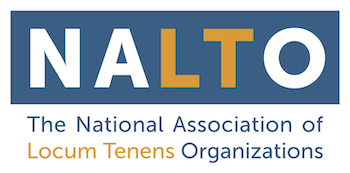The locum tenens process: From inquiry to paycheck
Engaging in locum tenens practice as a full-time career or on a part-time basis is simpler than you might think. While there are several steps in the process that take you from initial inquiry to being paid for providing services, each one is straightforward. The process will vary somewhat among agencies, but here are nine steps that are consistent from firm to firm.
1. Initial inquiry. Your first step is choosing a locum tenens agency or agencies. The National Association of Locum Tenens Organizations ( http://nalto.org/) is a good place to start. Interview several recruiters and work with those who listen carefully for what you want from a locum tenens career. Make sure they understand your motivation for engaging in locum tenens (great locations, diverse cultural experiences, money, etc.). Choose agencies that routinely place physicians in your specialty and have clients in geographic areas that appeal to you. Ask about the type of malpractice insurance they carry. Avoid recruiters who try to talk you into going where you do not want to go.
2. Paperwork. Your recruiter will have an application packet for you to complete and can assist you with securing medical licenses in states where you want to practice. Maintain an orderly file that contains your CV, copies of diplomas, licenses and certificates, a reference list, and a detailed record of each place you have practiced during the past 10 years. Using this file will make the paperwork associated with securing locum tenens engagements quick and easy.
3. Considering an opportunity. Once your recruiter has a good idea of what you are looking for and your paperwork is in order, you will be contacted with potential opportunities. The recruiter may introduce you to a scheduling director at this point, depending on the agency. Keep a log of all opportunities presented, especially if you work with more than one firm. At this stage, ask plenty of questions to make sure you are comfortable with the engagement. Listen to your intuition. If in doubt, ask more questions until you can be confident saying yes or no. To land the best engagements, offer to be on location for as long as your schedule allows. If a hospital needs coverage for two months, the administration usually prefers having one doctor for the entire time to having several rotate through.
4. Interview. You may have a telephone interview with an administrator, medical director, or division chief at the hospital or clinic you are considering. If a phone interview is not required but you would like one, ask your recruiter to arrange this. (For tips on how to handle a phone interview, see the April 2009 issue of LocumLife.)
5. Credentialing. Once you agree to a locum tenens placement, the hospital or clinic will have an application for you to complete. Refer to your well-organized file (see number 2) to make this step in the process painless. Turn paperwork in promptly to avoid delays in starting an engagement.
6. Logistics. Your recruiter or scheduler will work with you to arrange travel and lodging. Find out which of your expenses will be direct billed to the agency, which you will be reimbursed for, and which ones are not covered.
7. Orientation. When you arrive at a new location to practice, you should receive an orientation. This may be formal or informal, lasting a couple of hours or a full day, depending on the facility. Inquire in advance about what to expect. If the facility does not provide orientation, try to meet key players (practice manager, medical director, head nurses) on your first day so you will know who to turn to with questions.
8. Practice. As a locum tenens practitioner, you are filling a critical need and will be expected to hit the ground running. Be as flexible and adaptable as possible and remember that you are there to serve the needs of the facility, not to change its policies and procedures.
9. Getting paid. Assuming you turn in your work records promptly (signed by an authorized person at the hospital or clinic) a reputable agency will pay you quickly and according to your contract. Be sure to let your recruiter or scheduler know in advance if you are incorporated and use an employer identification number (EIN) rather than your Social Security number.
Ideally, you will establish long-term relationships with the recruiters, schedulers, and agencies you work with so that navigating the steps in the process will become faster and easier with each engagement.
Views and opinions expressed herein are those of NALTO and not necessarily those of Advanstar Communications Inc. or LocumLife.
About the Author
Karen Childress is a Colorado-based freelance healthcare writer currently crafting a series of articles on behalf of NALTO.
